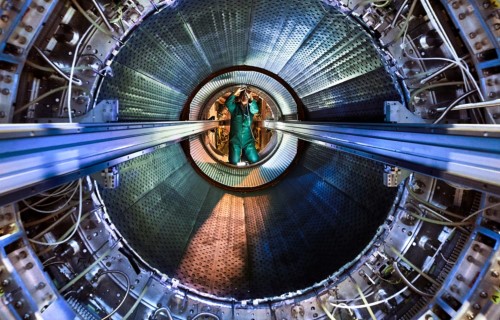Everyday Uses of Magnets
Introduction
Magnets are all around us. They silently exert their attractive force and play a crucial role in our daily lives. These versatile tools serve a multitude of functions, from the simple yet essential fridge magnet to advanced applications. Such industries include healthcare, transportation, and technology. This article will uncover these uses of magnets and illustrate their indispensable roles in our modern world.
1. Healthcare and Medicine
In the realm of healthcare, magnets have revolutionized diagnostic and treatment methods. Magnetic resonance imaging (MRI) machines utilize powerful magnets to create detailed images of the human body, aiding in the diagnosis of various medical conditions. Magnets also find applications in prosthetics, hearing aids, and experimental treatments like transcranial magnetic stimulation (TMS) for neurological disorders.  [1]
[1]
Figure 1. Transcranial Magnetic Stimulation (TMS)
2. Transportation
Magnetic technologies are driving innovation in transportation. Maglev trains using magnetic levitation offer high-speed and energy-efficient transit. Electric and hybrid vehicles rely on magnets in their electric motors for enhanced efficiency. Traffic lights employ magnetic sensors to manage traffic flow efficiently.
Related Reading: Application of Rare Earth Permanent Magnet Materials in Maglev Train
3. Electronics and Technology
Our electronic devices owe their functionality to magnets. Hard disk drives (HDDs) use miniature magnets for data storage. Speakers, headphones, and smartphone vibration motors all rely on magnets to produce sound and haptic feedback. Furthermore, renewable energy generation utilizes magnets in generators and turbines.
4. Manufacturing and Industry
The manufacturing sector benefits significantly from magnets. Magnetic conveyor belts streamline production processes in assembly lines and transport metal parts with ease. Recycling facilities rely on magnets to separate ferrous and non-ferrous materials. Magnetic clamps and fixtures play a vital role in welding and metal fabrication.
5. Construction and Architecture
The construction industry embraces magnets for various applications. Magnetic resonance testing assesses the structural integrity of buildings. Magnetic sweepers keep construction sites free of metal debris. Magnetic formwork systems streamline concrete construction.
6. Science and Research
In scientific research, magnets are essential tools. Particle accelerators like the Large Hadron Collider (LHC) employ superconducting magnets to propel particles at high speeds for fundamental research. Nuclear magnetic resonance (NMR) spectrometers are used to analyze molecular structures in laboratories.
 [2]
[2]
Figure 2. Large Hadron Collider (LHC)
7. Arts and Entertainment
The entertainment industry exploits magnets for creative and engaging purposes. Magnetic levitation is not just for transportation; it captivates us in the form of novelty floating globes and beds. Magnetic puzzle toys offer fun and educational challenges, while magnetic closures in fashion and accessories merge style and functionality.
Related reading: 6 Uses of Permanent Magnets In Everyday Life
Conclusion
Magnets, often taken for granted, are integral to our modern way of life. From healthcare and transportation to electronics and manufacturing, the uses of magnets extends far and wide. As we push the boundaries of scientific exploration and technological advancement, the applications of magnets continue to evolve, and new possibilities emerge.
Magnets, with their innate power of attraction, represent the enduring impact of science and engineering on our world. Stanford Magnets specializes in the supply of rare earth permanent magnetic products, including AlNiCo, SmCo, ceramic (ferrite), and neodymium magnets. Our clientele spans across various industries. We take pride in delivering large quantities of quality magnetic products at highly competitive prices. If you are in need of reliable magnetic solutions, do not hesitate to get in touch with us.
Reference:
[1] Wikipedia (2023). Transcranial magnetic stimulation [Photograph]. https://en.wikipedia.org/wiki/Transcranial_magnetic_stimulation
[2] Gibney E. (2022). How the revamped Large Hadron Collider will hunt for new physics. Nature, 605(7911), 604–607. https://doi.org/10.1038/d41586-022-01388-6















